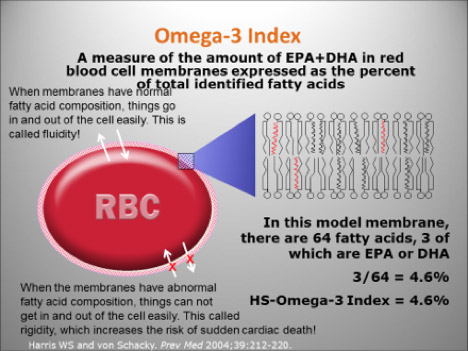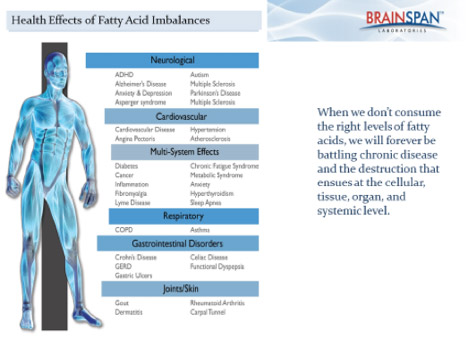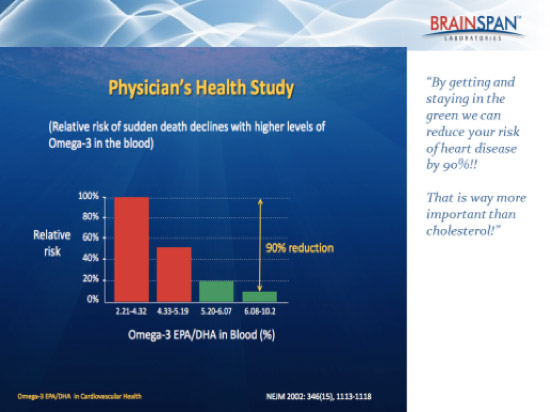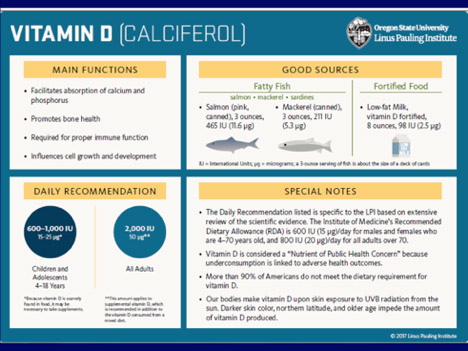Experts from the National Institutes of Health, John Hopkins, and Harvard have said, “… all major cell alterations that predispose each one of us to almost every major chronic disease in America today can be traced to inadequate dietary consumption of fatty acids.”
In Why Do I Still Have Thyroid Symptoms? Dr. Datis Kharrazian discusses essential fatty acids (EFAs) as the wonder nutrients that are found in fish oil, flaxseed, evening primrose oil, borage oil, and black current seed oil. They are also present in many raw, unprocessed nuts and seeds. These essential fatty acids contribute nutrients for hormone production as well as proper cellular communication and brain function.
The two primary EFAs — omega-6 (linoleic acid) and omega-3 (alpha-linolenic) — must be consumed in the diet because the body does not have the ability to synthesize them. EFA deficiencies and disorders are very common in the U.S. Some studies estimate up to 80% of the U.S. population fails to consume adequate amounts of omegas to achieve optimal health. Diets today contain excess hydrogenated and trans fats, which prevent the proper metabolism of EFAs.
The Omega-6 fatty acids are found in oils such as safflower, corn, cotton seed, evening primrose, black current seed and borage.
The Omega-3 fatty acids are found in flaxseed, nuts, seeds, liver and fish oil, egg yolks, and brain and organ meats.
These essential fatty acids are metabolized through various metabolic pathways to produce pro-inflammatory chemicals from the omega-6s and anti-inflammatory chemicals from the omega-3s.
The ideal ration between omega 6 and omega 3 fats is estimated to be from 3:1 to 5:1. The average American’s ratio is more like 25:1, thanks to diets heavy in processed vegetable oils.
There are many factors that determine how EFAs are metabolized. Ideally, the omega-3 would be metabolized to fish oils EPA (eicosapentaenoic acid} and DHA (docosahexaenoic acid), which are anti-inflammatory and necessary to maintain fluidity of all cell membranes. If certain nutrients are inadequate — such as B2, B3, B6, vitamin C, zinc, and magnesium — the omega-3 fatty acids will be metabolized via the omega-6 pathway, which will produce inflammatory chemicals and very rigid cell membranes. The omega-3 pathway will be shunted to the omega-6 pathway by excess sugar composition, insulin surges, inflammation, protein deficiencies, hypothyroidism and alcohol consumption. The results are the same: increased pro-inflammatory chemicals and rigid cell membranes!
You can be consuming the ideal amounts of omega-3 fatty acids and still be highly inflamed because of nutrient deficiencies or the other conditions described above. Everyone should have their omega-6 to omega-3 ratio determined. Just because you take vitamins doesn’t mean your omega-6 to omega-3 ratio is normal! Look at the diagram below.
Every cell of the body is surrounded by a double layer of fat. In the fatty membrane are omega-6 (black) and omega-3 (red) fatty acids.
The right combination of omega-6s and omega-3s is called the Omega-3 Index. If the ratio is optimal, various chemicals, nutrients, and hormones enter the cell and other chemicals exit the cell easily. This exchange is called fluidity. If the ratio is inappropriate, chemicals required for normal cell function, nutrients and hormones can’t enter the cell to ensure it is functioning at an optimal level. This is called rigidity and increases the risk of numerous conditions. Look at the diagrams below.



Ideal membrane composition is critical if the optimal ratio is ever to be obtained. We have a simple test, BrainSpan, that is performed at home to determine the omega-6 to omega-3 ratio and many other factors. The results of this test are far more important than your cholesterol levels. We encourage to have the test done as soon as possible. The results improve the quality of your life and may even save it.
Please Meet Vitamin D3
Vitamin D can be synthesized in the skin upon exposure to sunlight and is then metabolized in the liver and kidney to its metabolically active form, 1α,25-dihydroxyvitamin D. The blood test is called 1-25 OH-Vitamin D.
Vitamin D is essential for maintenance of bone mineralization through the regulation of calcium and phosphorus homeostasis. Vitamin D also exhibits many non-skeletal effects, particularly on the immune system (autoimmune diseases), endocrine (thyroid disorders, type 2 diabetes), and cardiovascular systems (heart disease, hypertension).
The suggested blood levels are listed below:
Deficiency = <32 ng/mL (80 nmol/L)
Insufficiency = 32-50 ng/mL (80-125 nmol/L)
Optimal = 50-80 ng/mL (125-200 nmol/L)
Excessive = > 100 ng/nL (250 nmol/L)
Women who have vitamin D levels less than 50 ng/mL have increased risk of breast cancer. Some studies have found the vitamin D levels greater than 51 decrease breast cancer risk by 53%.
Juvenile diabetes is reduced by 80%, and heart disease and cancer by 50% when vitamin D levels are optimal.
However, vitamin D deficiency is widespread!
In the U.S., there is an epidemic of type 2 diabetes and obesity. Studies show that low vitamin D is associated with insulin resistance (too much insulin) and beta cell dysfunction (beta cells create insulin in the pancreas). Supplementation with vitamin D reduces the concentrations of serum-free fatty acids in patients with type 2 diabetes, which further suggests an improvement in insulin sensitivity (less insulin is required to transport glucose into the cell).
The 60% improvement in insulin sensitivity that results from vitamin D treatment indicates that treatment is more potent than troglitazone or metformin treatments (54% and 13% improvement in insulin sensitivity, respectively).
Obesity (body mass index ≥30 kg/m2) increases the risk of vitamin D deficiency. Once vitamin D is synthesized in the skin or ingested, it can be sequestered in body fat stores, making it less available to the tissue in individuals with higher body fat mass. Moreover, vitamin D supplementation trials have shown that obese people reached much lower serum 25-hydroxyvitamin D concentrations compared to normal weight (BMI <25 kg/m2) participants with equivalent oral dosages.
Recent findings suggest high magnesium intakes may reduce the risk of vitamin D insufficiency. Magnesium regulates the activity of critical enzymes in vitamin D metabolism, which explains how magnesium deficiency negatively affects vitamin D status.
Here are the conditions associated with suboptimal VitD3 levels:
- Ankylosing spondylitis (a type of arthritis in which there is long-term inflammation of the joints of the spine)
- Back pain
- Breast cancer
- Colon cancer
- Depression
- Diabetes
- Dementia
- Epilepsy
- Graves’s disease (hyperthyroid)
- Heart disease
- Hypertension (high blood pressure)
- Lupus (autoimmune disease)
- Migraine headaches
- Multiple sclerosis
- Parkinson’s disease
- PCOS (polycystic ovarian syndrome)
- Rheumatoid arthritis
With regard to heart disease, low vitamin D actually doubles the chance of having an early heart attack and is more predictive of early death than high cholesterol level.
The higher the vitamin D level, the lower the coronary calcifications. Vitamin D makes arteries more stable and less likely to rupture.
If everyone in the U.S. took the inexpensive vitamin D supplements, it would reduce the risk of cancer by 7 – 14% and save as much as $25 billion in medical costs for cancer alone.
For the Older Set
The older we get, the less our skin can handle direct UVB rays of light — meaning a reduced ability to synthesize vitamin D in the skin — and that leads to less vitamin D absorption. Using sunscreen and staying indoors prevents Vitamin D absorption as well. It has been estimated that across Canada, the U.S., and Europe, the prevalence of vitamin D deficiency ranges between 20% – 100% in the elderly.
As revealed in the diagram below, you’d have to eat a lot of fatty fish and consume significant amounts of dairy to obtain adequate amount of vitamin D3. What you consume in your diet can be augmented by a vitamin D3 supplement. The amount of supplement needed for an individual to obtain optimal levels will depend on the baseline level. A blood test for 25-OH vitamin D3 levels should be taken at least twice a year, because optimal levels are beneficial for your health.

Probiotics ABCs
What is the microbiome? It’s a collection of various microbes that live in and on the human body, with the majority of the microbes in the large intestines. There are over 100 trillion microorganisms, some of which can weigh up to 5 pounds. The genetic material of the microbiome contains greater than 150 times the number of human genetic material. There are many factors that determine the composition of the microbiome, including genetics, method of birth (vaginal or cesarean section, home or hospital), diet, lifestyle, vaccinations, antibiotics, and hygiene. Just one course of antibiotics can cause an imbalance of the microbiome for up to a year!
Laboratories are available to determine the composition of an individual’s microbiome. The microbiome can be re-established to an optimal level with the proper dietary changes, avoiding the factors that caused it to become abnormal, and the appropriate probiotic therapy.
The Role of the Gut Microflora
Gut microflora is important for many reasons. It has a role in:
- Producing vitamins including B vitamins B12, thiamine and riboflavin, and vitamin K, which is needed for blood coagulation
- Digestion and energy
- Detox and biotransformation of hormones
- Chemical synthesis and modulation of SCFA, AA, neurotransmitters, and vitamins
- Colonic resistance against pathogens
- Systemic immune modulation
The Microbiome: Imbalance
Clinically significant imbalances in the GI microbiome (dysbiosis) have been associated with:
- Irritable bowel syndrome (IBS)
- Inflammation
- Inflammatory bowel disease (IBD)
- Maintaining immune balance
- Metabolic disorders such as heart disease, body weight and fat distribution, insulin sensitivity/type 2 diabetes
- Autism
Dr. David Perlmutter recommends five core species of probiotics: lactobaccilus plantarum, lactobaccilus acidophilus, lactobaccilus brevis, bifidobacterium lactis, and bifidobacterium longum. Medical Detective has you covered on all counts.
Choosing a Probiotic
In selecting a probiotic, it is important that each individual bacterium be listed, the strain of bacterium that has been proved to be effective and the colony count. A listing stating lactobaccilus and bifiidobacterium 50 billion CFU does not tell you the strain of the bacteria or the colony count. If a company is not providing you this information, it’s highly likely you’re not truly getting the strains it’s stating it’s giving you.
Medical Detective have multiple probiotics with a mixture of bacterium for the gut, ear, nose, throat and dental flora. Additionally, we have probiotics combined with immunoglobulins that are used to treat bowel infections and autoimmune conditions such as leaky gut.
Yes, You Need A Multivitamin
“I eat a perfect diet! I’m gluten, dairy and soy free! I eat strictly organic and avoid GMO foods. Why do I need a multivitamin?”
It’s not what you eat; it’s what you digest and absorb, and what’s transported into the cells of your body to allow them to function at the optimal level! The only way to determine if your nutrients are at an optimal level is through testing. The most accurate nutritional testing available is a SpectraCell Micronutrient Analysis. This test involves looking inside a white cell, called a lymphocyte, that stays in your system for six months. This is six-month history of what vitamins, minerals and antioxidants you have provided to your cells. A simple blood draws measures what’s in blood at moment, but not what’s in cells.
Assuming you have the perfect diet, what could go wrong that would interfere with those nutrients entering your cells at the optimal level? Here is a short list of factors that affect your nutrient status:
- Advancing maturity (getting older)
- Denture problems/poor mastication
- Poor dietary choices
- A bowel problem such as H-pylori, bacterial, yeast, or parasite infection in the small intestines
- Malignancy
- Celiac disease
- Leaky gut
- Food allergies
- History of bariatric surgery
- Drug mugging (medications deplete nutrients)
- Decreased stomach acid
- Lifestyle factors
- Hormonal status
- Nutrient transport
- Rigid cell membranes
- Tobacco and alcohol
- Genetic Influence
Any one of these factors can interfere with the ability to deliver the nutrients to your cells to achieve optimal functions. Until you’re tested, take a multivitamin!


